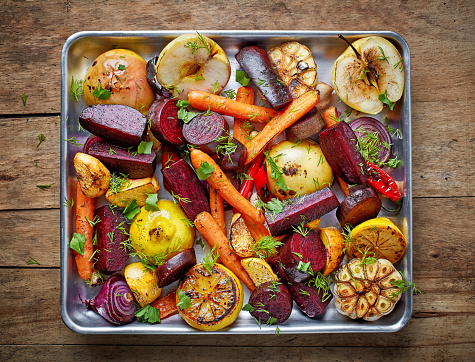How to Cook Veggies: 3 Ways
Article posted in: Lifestyle
Veggies are superstars of a healthy diet like Nutrisystem. You can eat as much as you want of them (with a few exceptions), even when you’re trying to lose weight. Raw vegetables are ideal for snacking, but cooking actually releases their rich flavors and, in many cases, makes it easier for your body to absorb their vitamins and minerals. Here are three smart ways to cook veggies, and the keys to getting the best taste and nutrition from each method.
METHOD: Steaming
WHY: Cooking vegetables over boiling water (rather than in boiling water) softens them without turning them mushy or allowing nutrients to leach into the water. Steaming adds no extra calories to vegetables, so they are still an “unlimited” option for people trying to shed excess weight.
WHAT: Steaming tenderizes artichokes, asparagus, broccoli, green beans, snap peas, zucchini and yellow squash without spoiling their texture. Get steaming right every time with our recipe for Crunchy Steamed Snap Peas.
HOW: Cut vegetables into bite-size pieces so they all cook evenly. Wait for the water to boil before putting the basket full of veggies in the steamer. They’re done when they’re soft enough to jab with a fork but still brightly colored. To bump up the flavor, add herbs and spices such as lemongrass or and ginger to the water before cooking.
METHOD: Sautéing
WHY: High heat and a bit of olive oil bring out the natural flavors of vegetables. Because sautéing is so quick, the foods retain their vitamins and minerals. Even better, many of the nutrients in vegetables are fat-soluble, so your body absorbs them more readily when they’re cooked with a little oil.
WHAT: Peppers, onions, mushrooms, broccoli rabe, kale and other hearty greens become perfectly tender and most flavorful when they’re sautéed. Don’t believe us? Try Simple Sautéed Spinach!
HOW: Heat the pan first over medium-high heat, then add just enough oil to lightly coat the ingredients. When the oil begins to simmer, add the vegetables. Cook greens just a few minutes until they soften. Give other veggies up to 10 minutes—they should still be firm but beginning to brown. Want more even more flavor in your sauté? Add thinly sliced garlic or a few hot pepper flakes to the oil before cooking the vegetables.
METHOD: Roasting
WHY: Cooking in the oven tenderizes even the crunchiest vegetables and caramelizes their natural sugars, making them taste sweeter without adding calories. Zucchini Noodles with Roasted Vegetables and Pesto are a prime example of how veggies should taste.
WHAT: The flavors of carrots, beets and other “roots” are concentrated by roasting, while oven cooking brings out the sweetness in cauliflower and Brussels sprouts and subdues their more cabbage-like tastes.
HOW: Toss bite-size pieces of vegetables with a little olive oil and spread them evenly on a baking sheet. Put the tray in a 400 degree F oven. They’re done when they get brown edges. When the weather is warm, you can get similar results from cooking vegetables on your grill.









